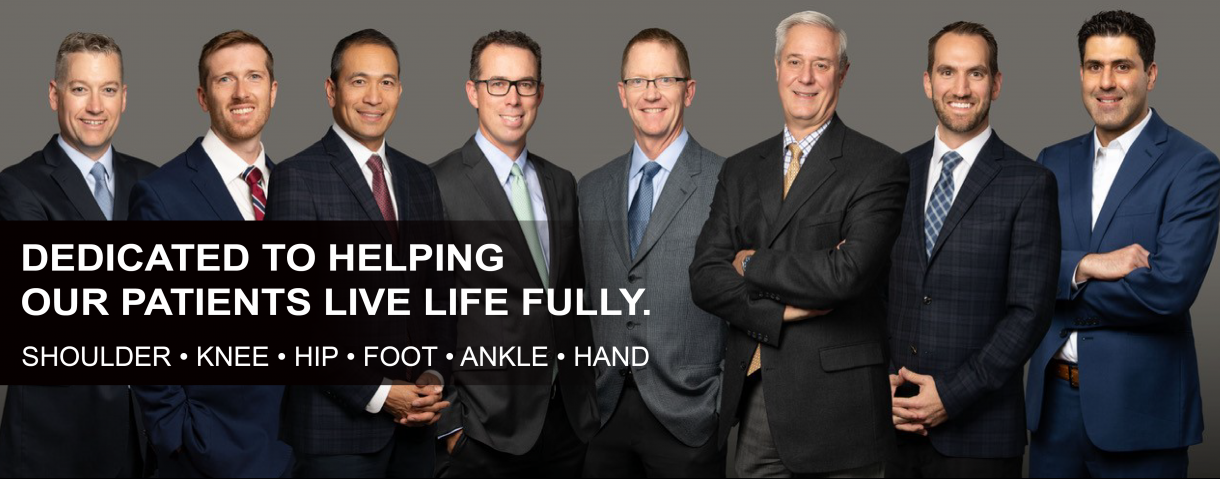ESPN recently published an article about his Dupuytren’s contracture, also known as Viking’s disease. Orthopedic Associates Dr. Imran Choudhry took some questions about the article and the condition and has provided the following commentary. To view the original article click here: Published on ESPN.com
Q: What is the condition that John Elway has and what causes it?
A: It’s called Dupuytren’s disease and is genetically mediated, more common in people of Northern European ancestry and nicknamed “Viking Disease” Source: AAOS
Q: How do you know if you have it?
A: It’s usually quite obvious. Your fingers and palm will have thick nodules and there may be a cord that flexes your finger such that you cannot straighten it. You may have years of stable disease followed by steady progression. It can affect any finger but most commonly small and ring fingers. NO testing such as x-rays, labs, or MRI are needed to diagnose the condition. If you are suspicious you may have it, simply make an appointment with a Board-Certified Hand Surgeon.
Q: Is it painful and does it spread to other body parts?
The condition is not painful. It does not spread to other parts of the body but you can have similar problems on your feet (Ledderhose’s disease) or on your penis (Peyronie’s disease).
Q: What is the best treatment and can you tell me more about what John Elway had done?
A: Treatment depends on the severity and type of Dupuytren’s cords that you have. In general there are three options- needle fasciotomy, collagenase injection (what Elway recently had), and surgical fasciectomy (surgery to remove all the Dupuytren’s cords), with the latter two options being the most common. The needle fasciotomy is a procedure where the bevel of a common injection needle is used to sever the cord in a few areas under local anesthetic. The collagenase injection is chemical transection of the cord, so basically a chemical version of the same thing the needle does but much more expensive and with higher complications. Recent Level 1 (highest level) studies have shown no difference between collagenase injection and needle fasciotomy but higher complications in the collagenase injected patients. Elway is now a spokesperson for the pharmaceutical company that produces the drug and his appearance on the Today show was a paid promotional appearance for Endo Pharmaceuticals, the maker of Xiaflex (collagenase). https://www.9news.com/article/news/elway-reveals-hand-condition-on-today-show/73-8338ad19-1544-4150-b7ec-abce5143de5c
Q: What is your preferred treatment method and what has been your experience/outcomes?
A: The worst-case complication with the collagenase injection is tendon rupture because the enzyme dissolved the tendon by accidental deeper injection. This is devastating and impossible to recover from fully. For this reason, I favor surgical fasciectomy, although I do offer the injection for the correct patient or upon request. The likely worst-case scenario with surgery is nerve injury, which is recoverable and not as devastating as tendon rupture. In my series over the last 5 years I’ve had 0 incidence of infection, 0 cases of nerve damage, 100% patient satisfaction and no major complication (knock on wood). Recurrence is inevitable in either case because it is a genetic disease.
The following article was published by ESPN.com:
John Elway says his hands are back to normal after a debilitating medical condition left him unable to pick up or hold a football.
Elway, the Denver Broncos president of football operations and general manager, appeared Thursday on NBC’s “Today” to help raise awareness for Dupuytren’s contracture, also known as Viking disease.
The Hall of Fame quarterback said he was diagnosed with the condition 15 years ago — well after he retired following the 1998 season — and that his ring fingers on both hands were constricted into a bent position.
Elway initially opted against having surgery to treat the issue and more recently underwent a non-surgical treatment to attempt to straighten his fingers.
“When I saw my hand doctor, the only option was surgery,” Elway said. “I wasn’t interested in more surgeries. I’ve had so many surgeries during my playing career. At that point in time I didn’t want to have another one.”
Though his hands are now back in their normal state, Elway said they could constrict again in the future.
“It’s a rather common condition, and a lot of people do have it, but they don’t get it diagnosed,” said Elway, who is involved with a campaign to raise awareness for the condition that may affect 16 million Americans.
“If anyone is concerned they might have it, they should go see a hand specialist. If you’re diagnosed with it, I want people to realize that there are options to treat it.”
Elway said he wasn’t certain if his 16-year football career led to his condition. The full cause of condition is unknown, but according to the Mayo Clinic, “There’s no evidence that hand injuries or occupations that involve vibrations to the hands cause the condition.”
“It is hereditary and it also called the ‘Viking disease,'” Elway said. “If you have a Norwegian background, you have a higher chance of developing it. That’s a possibility for me, but nobody else in my family has had it. I’m not sure if me playing football has played a part too.”







Leave a Reply